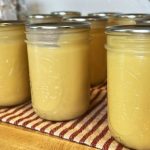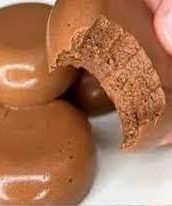Making Homemade Butter: A Comprehensive Guide
Making homemade butter is not just a satisfying culinary experience; it’s a wonderful way to add fresh, wholesome flavors to your kitchen creations. Whether you’re using a stand mixer, a hand mixer, or even a mason jar, the process of creating butter from cream is simple, fun, and rewarding. In this guide, we’ll explore various methods for making butter, and highlight the benefits of using fresh, high-quality ingredients.
Why You Should Make Butter at Home
Making butter at home offers a number of compelling advantages. First, it’s incredibly easy and cost-effective. Depending on where you live, it may be more affordable to purchase heavy cream and churn your own butter than to buy store-bought options, especially if you have access to local dairy. Plus, homemade butter tends to have a richer, more robust flavor than mass-produced alternatives.
Another benefit of making butter at home is the fun and educational aspect of the process. Whether you’re a seasoned cook or a beginner, churning butter is an enjoyable activity that can connect you to traditional cooking methods. It’s also a perfect opportunity for children to engage in a hands-on cooking experience. Making butter allows kids to experience the magic of turning liquid cream into solid butter, and they’ll love the satisfaction of eating something they helped create.
Finally, homemade butter can be customized to your taste. You can make it sweet, salted, or even add herbs and spices for a flavorful twist. The versatility of homemade butter opens up a world of culinary possibilities, from spreading it on fresh-baked bread to incorporating it into your favorite recipes.
The Cream You Need to Make Butter
The key ingredient in homemade butter is cream. Cream is the high-fat portion of milk that separates naturally when milk is left to sit. The fat in the cream is essential for making butter; when agitated, it clumps together and forms solid butter while the remaining liquid becomes buttermilk.
It’s important to use the right type of cream for successful butter-making. Heavy cream or heavy whipping cream, which typically contains 36% to 38% fat, is ideal. This high-fat content ensures that your butter will form quickly and with ease. While lighter whipping cream may work, it has a lower fat content (around 30%), which may result in a longer churning time or less butter.
Methods of Making Homemade Butter
1. Using a Stand Mixer or Hand Mixer
The stand mixer method is one of the most efficient ways to make homemade butter. With a whisk attachment, a stand mixer does most of the work for you. If you prefer a hand mixer, it’s just as effective, though you may need to put in a bit more effort.
To get started, simply pour your heavy cream into the mixing bowl. Begin by whipping the cream on a low setting to avoid splashing. Gradually increase the speed to medium-high. After several minutes, the cream will begin to thicken and form soft peaks. Continue mixing, and soon you’ll notice that the cream starts to turn yellow and clump together. At this point, you’ll see the buttermilk separating from the butter solids.
2. Churning in a Mason Jar
A mason jar is a fun, old-fashioned way to make butter and offers a hands-on experience for both adults and kids. All you need is a jar, heavy cream, and some elbow grease. Fill the mason jar halfway with cream and screw the lid on tightly. Shake the jar vigorously for about 5-7 minutes until you feel resistance. Continue shaking for another 5 minutes, and soon you’ll hear a sloshing sound, indicating that the butter has formed.
The beauty of using a mason jar is its simplicity. It’s an accessible method for all ages, and it doesn’t require any specialized equipment. Plus, it’s a wonderful way to engage kids in the kitchen and teach them about food production.
The Importance of Rinsing Your Butter
Once the butter has formed, it’s essential to rinse it properly. Rinsing removes any remaining buttermilk, which can spoil the butter and affect its flavor. To rinse your butter, simply strain the solids through a fine mesh strainer. Then, pour cold water over the butter and gently knead it with your hands to remove any remaining liquid. Repeat the rinsing process 2-3 times until the water runs clear. This step ensures your butter stays fresh for longer.
Salted vs. Unsalted Butter
When making butter, you have the option to add salt, depending on your preference. If you prefer salted butter, you can either mix salt into the cream before churning or add it after the butter has been made. Adding salt before churning will also salt the buttermilk, which may affect its use. If you prefer more control over the salt content, adding salt after the butter has been made is a great option.
A general guideline is to add about 1/4 teaspoon of salt for every 1 cup of cream used. Once the butter is at a soft, spreadable consistency, gently knead the salt in with a spatula or your hands to ensure even distribution.
Storage and Shelf Life of Homemade Butter
Homemade butter, when properly stored, can last for several days to weeks. After rinsing, place your butter in an airtight container. If you’re keeping it at room temperature, it should last for 3 to 5 days. For longer storage, refrigerate it for 7 to 10 days. You can also freeze butter for up to 6 months. To freeze, wrap the butter tightly in plastic wrap, then foil, to prevent freezer burn. Thaw frozen butter in the refrigerator or at room temperature, and use it within 3 to 5 days if left at room temperature, or within 7 to 10 days if refrigerated.
Using Your Homemade Butter
The possibilities for using your homemade butter are endless. Spread it on fresh-baked bread, use it in cooking or baking, or try making flavored butters with herbs, garlic, or honey. Homemade butter can elevate any dish, adding richness and depth that store-bought butter simply can’t match.
How to Can Butter at Home
Canning butter at home is a great way to preserve it for long-term storage, especially if you’re making a large batch of homemade butter and want to keep it for later use. While butter can be canned, it is important to follow proper procedures to ensure safety, as butter is a high-fat dairy product and can potentially spoil if not processed correctly. Below is a step-by-step guide for canning butter safely at home.
How to Can Butter at Home
Equipment Needed:
- Sterilized jars (half-pint or pint jars work best)
- Lids and rings (new lids to ensure a proper seal)
- Canning pot or pressure cooker
- Large pot for melting butter
- Clean towels
- Funnel
- Canning tongs
- Butter (freshly made or store-bought)
Ingredients:
- Fresh homemade butter or store-bought butter (ensure it is unsalted for best preservation)
- Salt (optional, but typically not used for canning)
Preparation Steps:
- Sterilize the Jars:
- Begin by sterilizing your canning jars. You can do this by boiling them in a large pot of water for about 10 minutes, or placing them in the oven at 225°F (107°C) for 10-15 minutes. Ensure the lids are also sterilized by boiling them in water for a few minutes.
- Keep the jars warm until you’re ready to fill them with butter.
- Melt the Butter:
- In a large saucepan or pot, melt your butter over low to medium heat. If you’re using homemade butter, make sure to melt it gently, stirring occasionally to prevent burning.
- Skim off any foam that forms on top of the melted butter. You want the butter to be clear of any milk solids for longer shelf life.
- Prepare Your Canning Setup:
- Ensure your canning pot or pressure cooker is ready. Canning butter requires a pressure canner, as butter is a low-acid food, and it must be processed under pressure to kill any harmful bacteria or microorganisms.
- If you don’t have a pressure canner, it’s highly recommended to avoid canning butter, as water-bath canning is not safe for butter due to its low acidity.
- Fill the Jars with Butter:
- Using a funnel, carefully pour the melted butter into your warm sterilized jars. Leave about 1/4 inch of headspace at the top of the jar to allow for expansion during processing.
- If you’re adding salt, you can add it now. A common guideline is 1/4 teaspoon of salt per pint, but this is optional. Most people prefer to can butter unsalted for better preservation.
- Seal the Jars:
- Wipe the rims of the jars with a clean, damp cloth to ensure there’s no residue or butter left on the edges.
- Place the sterilized lids onto the jars and screw on the rings until they’re fingertip tight. Avoid overtightening, as it can cause improper sealing.
- Process the Butter:
- Place the filled jars into your pressure canner. Follow the manufacturer’s instructions for your specific pressure canner. Generally, you’ll want to process the jars at 10-11 pounds of pressure for 75 minutes for pint jars (adjust the time slightly based on your elevation).
- Ensure that the water in the canner covers the jars by at least 1-2 inches.
- After processing, allow the pressure canner to cool down and release pressure naturally before removing the jars.
- Check the Seals:
- After the jars have cooled, check the seals. The lids should be concave and should not pop up when pressed. If the lid pops back up, the jar did not seal properly and should be refrigerated or reprocessed.
- Store the Canned Butter:
- Once the jars are sealed, store them in a cool, dark place away from direct sunlight. Properly canned butter can last for up to a year when stored in a cool pantry.
- Once opened, refrigerate the butter and use within 1-2 weeks.
Important Safety Notes:
- Pressure Canning is Essential: Butter should always be canned using a pressure canner, not a water bath canner. Butter is a low-acid food, and without the pressure canning method, it may not reach a high enough temperature to kill bacteria like Clostridium botulinum, which can lead to botulism.
- Check for Spoilage: If a jar of butter looks or smells strange after being opened, discard it immediately. Signs of spoilage include discoloration, mold, or a sour smell.
- Avoid Overfilling Jars: Leaving enough headspace is crucial for a proper seal and for preventing butter from boiling over during the canning process.
Why You Should Can Butter
Canning butter is an excellent way to preserve it for long-term storage, especially if you have a surplus of butter or prefer homemade butter over store-bought. It also makes butter easier to store and prevents it from going rancid quickly, giving you access to fresh butter months down the line.
Alternative Methods to Extend Butter Shelf Life
If canning butter isn’t an option, you can extend butter’s shelf life by freezing it in airtight containers or freezing butter in individual portions (like ice cube trays). However, canning offers a great non-refrigerated storage solution, making it a versatile option for long-term preservation.
By following these steps and using a pressure canner, you can safely preserve butter at home and enjoy the taste of fresh butter for months to come.






